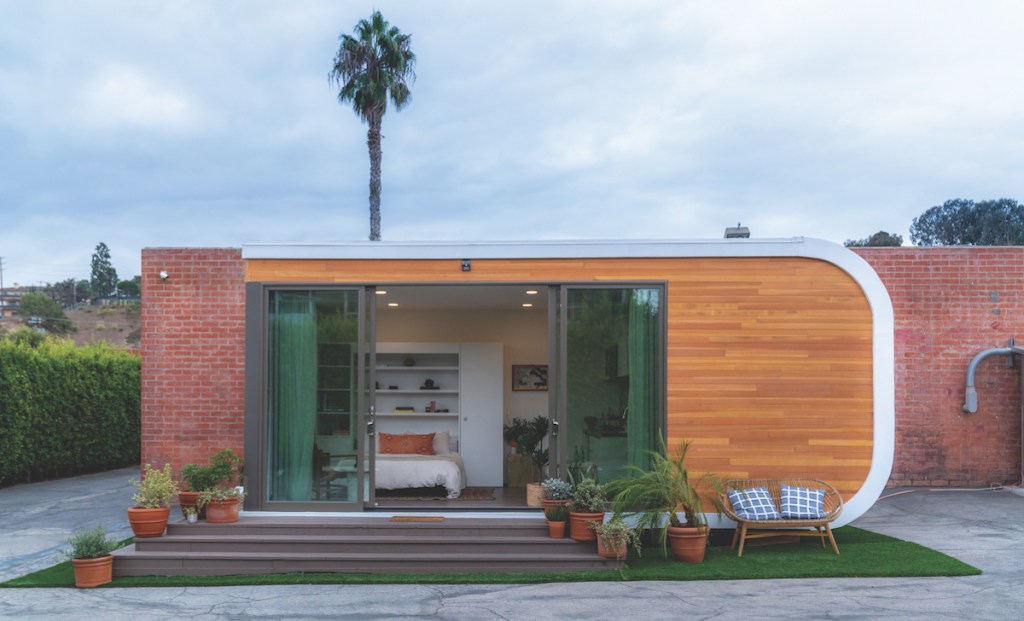
Photo credit: Mighty Buildings
Aging parents. College students returning to the fold. Millennials seeking affordable housing in high-priced markets. People with disabilities who can live on their own but need a little family support. All of these populations comprise the target market for accessory dwelling units (ADUs), commonly referred to as granny flats, in-law suites, casitas or guest houses – self-contained living units that usually have their own bedrooms, kitchen and bathroom, but are situated on a lot with a separate home. ADUs come in many different forms.
They can be detached, such as a small cottage or guest house on the same parcel as a single-family home. They can be attached, such as an addition on a primary structure. They can be created from the conversion of existing space, such as a garage. Or they can be what California terms a “Junior Accessory Dwelling Unit,” which results from the conversion of space contained entirely within an existing or proposed single-family residence.
No matter what the form, ADUs are a way to provide affordable housing options in a neighborhood – even a historical neighborhood – without changing the character or causing a substantial increase in housing density. That’s the good news. But there’s a flip side to ADUs.
“The bad news is that sometimes, some analysts in the industry portray ADUs as the solution to the lack of housing,” said Robert Dietz, chief economist and senior vice president for economics and housing policy for the National Association of Home Builders. “It’s not a long-term solution because an ADU is often not going to be the right kind of housing for a young adult who eventually is going to marry and have kids. It’s not a substitute for entry-level, new-construction single-family housing that was particularly important and in high demand during 2020 as people wanted lower-density neighborhoods and more space for home offices. ADUs don’t add that kind of housing. But as an immediate-term solution to the lack of affordable rental housing, ADUs absolutely have a role to play.”
The post The business case for accessory dwelling units appeared first on HousingWire.
